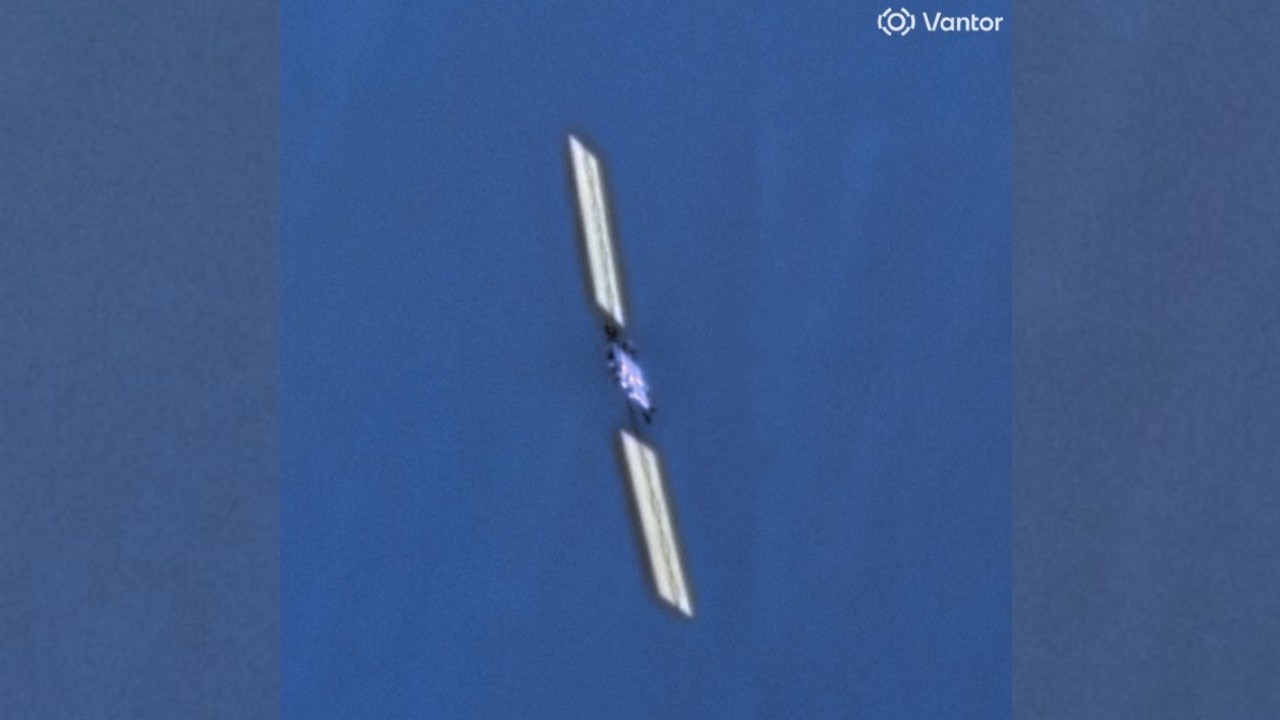Lunar Origin Story Could Support Wet-Moon Findings

If Earth retained water after its fiery birth, could the moon have done so, too?
Evidence suggests water may exist below the moon's surface. And to figure out if current ideas about the lunar formation process support the possibility of a watery moon, scientists modeled the moments when Earth and the moon were forming from the same material.
The OSIRIS-REx spacecraft photographed Earth and the moon on Jan. 17, and both appear to almost merge into a singular point against the dark expanse of space. And for a moment, billions of years ago, the planet and the moon were one.
The prevailing theory behind the birth of the moon holds that Theia, a Mars-size hunk of rock, smashed into young Earth between 4.4 billion and 4.5 billion years ago, and was powerful enough to heat up and vaporize material, sending some of it flying off into space. This formed a disk of matter, and the moon formed as these pieces came together, cooled down and coalesced, according to the theory. [5 Wild Theories on How the Moon Formed]
This event is the subject of a recent study, conducted by Miki Nakajima, of the Carnegie Institute for Science, and Dave Stevenson, of the California Institute of Technology. They wanted to know if the lunar origin story, as commonly understood by astronomers, supports recent findings that water might exist on the moon. Specifically, they looked at the range of temperatures possible during the proto-moon stage.
If the disk of material that formed the moon was very hot, then hydrogen and other elements with low boiling points would have jetted off into space, the study's researchers said in a statement. And if there's no hydrogen, there's no water. But if the disk was cool enough, then hydrogen wouldn't have vaporized off into space, and instead would have remained on the lunar building blocks.
"The good news is that our models show that observations of a wet moon are not incompatible with a giant impact origin," Nakajima said in the statement.
Breaking space news, the latest updates on rocket launches, skywatching events and more!
"This is still very much an area of active research … figuring out about how much water exists in the Moon," Nakajima added. "This is a highly important and challenging question to answer given that we have limited knowledge on the history and distribution of lunar water." Theories of lunar formation now need to account for the higher estimates of lunar water found in mission samples, and though there's more work to be done, this research is an important step in understanding how the moon came to be.
The new work was detailed in the journal Earth and Planetary Science Letters.
Follow Doris Elin Salazar on Twitter@salazar_elin. Follow us @Spacedotcom, Facebook and Google+. Original article on Space.com.

Doris is a science journalist and Space.com contributor. She received a B.A. in Sociology and Communications at Fordham University in New York City. Her first work was published in collaboration with London Mining Network, where her love of science writing was born. Her passion for astronomy started as a kid when she helped her sister build a model solar system in the Bronx. She got her first shot at astronomy writing as a Space.com editorial intern and continues to write about all things cosmic for the website. Doris has also written about microscopic plant life for Scientific American’s website and about whale calls for their print magazine. She has also written about ancient humans for Inverse, with stories ranging from how to recreate Pompeii’s cuisine to how to map the Polynesian expansion through genomics. She currently shares her home with two rabbits. Follow her on twitter at @salazar_elin.
